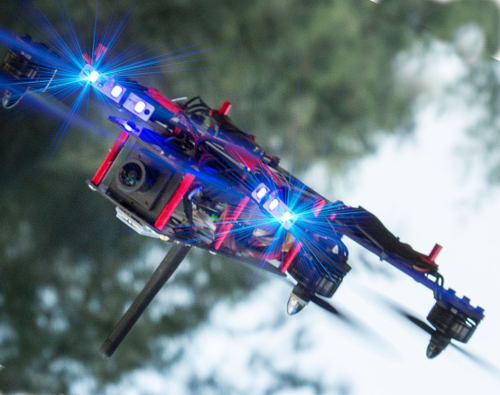Bug brains trained on drones
 Hoverfly brains have been mapped to detect the sound of distant drones.
Hoverfly brains have been mapped to detect the sound of distant drones.
Australian researchers have reverse engineered the visual systems of hoverflies to detect drones’ acoustic signatures from almost four kilometres away.
Trials using bio-inspired signal processing techniques have reportedly led to a 50 per cent improved detection rate than existing methods.
The technique involves looking for specific patterns (narrowband) and/or general signals (broadband) to pick up drone acoustics at short to medium distances, but at longer distances, the signal is weaker and both techniques struggle to achieve reliable results.
Similar conditions exist in the natural world. Dark lit regions are very noisy but insects such as the hoverfly have a very powerful visual system that can capture visual signals, researchers say.
Essentially, the same processes which allow small visual targets to be seen amongst visual clutter are being redeployed to extract low volume acoustic signatures from drones buried in noise.
By converting acoustic signals into two-dimensional ’images’ (called spectrograms), researchers used the neural pathway of the hoverfly brain to improve and suppress unrelated signals and noise, increasing the detection range for the sounds they wanted to detect.
The findings could help combat the growing global threat posed by IED-carrying drones.
University of South Australia Professor of Autonomous Systems, Anthony Finn, says that insect vision systems have been mapped for some time now to improve camera-based detections, but this is the first time that bio-vision has been applied to acoustic data.
“Bio-vision processing has been shown to greatly increase the detection range of drones in both visual and infrared data,” Prof Finn says.
“However, we have now shown we can pick up clear and crisp acoustic signatures of drones, including very small and quiet ones, using an algorithm based on the hoverfly’s visual system.”
The hoverfly’s superior visual and tracking skills have been successfully modelled to detect drones in busy, complex and obscure landscapes, both for civilian and military purposes.
“Unauthorised drones pose distinctive threats to airports, individuals and military bases. It is therefore becoming ever-more critical for us to be able to detect specific locations of drones at long distances, using techniques that can pick up even the weakest signals. Our trials using the hoverfly-based algorithms show we can now do this,” Prof Finn says.
The ability to both see and hear small drones at greater distances could be hugely beneficial for aviation regulators, safety authorities and the wider public seeking to monitor ever increasing numbers of autonomous aircraft in sensitive airspace.
“We’ve witnessed drones entering airspace where commercial airlines are landing and taking off in recent years, so developing the capacity to actually monitor small drones when they’re active near our airports or in our skies could be extremely beneficial towards improving safety,” says Associate Professor in Autonomous Systems at Flinders University, Dr Russell Brinkworth.
More details are accessible here.







 Print
Print